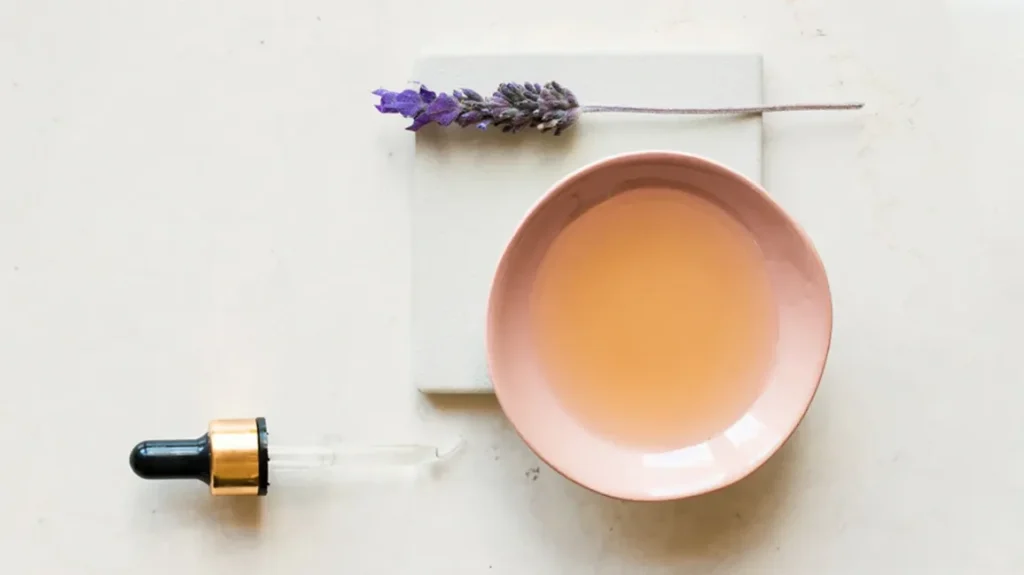Labor
If you’re curious about how to use essential oils for labor and delivery, you’re not alone. Many expectant mothers look for natural methods to comfort, calm, and support their birth experience. Essential oils—aromatic extracts from plants—have become increasingly popular for their soothing and therapeutic properties during childbirth. In this guide tailored for women preparing for labor, you’ll discover the safest ways to incorporate essential oils, top recommended oils, helpful blends, and practical tips to maximize their benefits for both mom and baby.
Understanding How to Use Essential Oils for Labor and Delivery
Why Consider Essential Oils During Childbirth?
- Natural Comfort: Essential oils can promote relaxation and ease discomfort during contractions.
- Emotional Support: Their scents may boost mood and reduce anxiety before, during, and after delivery.
- Versatility: These oils can be diffused, used in massage, or added to baths for a personalized experience.
Are Essential Oils Safe for Labor?
While many essential oils are safe when used appropriately, always consult your healthcare provider or a certified aromatherapist before use—especially during pregnancy and labor. Some oils should be avoided due to potential side effects.
Top Essential Oils for Labor and Delivery
These essential oils are widely considered safe and beneficial for use during labor (with proper guidance):
- Lavender: Promotes relaxation and eases anxiety.
- Clary Sage: Traditionally used to stimulate contractions and support labor progression.
- Peppermint: May relieve nausea and boost energy, especially during early labor.
- Frankincense: Supports deep breathing and centering, helping with emotional grounding.
- Geranium: Can enhance mood and balance emotions.
- Ylang Ylang: Offers calming, floral notes to reduce tension.
Note: Always use therapeutic-grade, 100% pure essential oils and confirm safety with your birth team.
How to Use Essential Oils for Labor and Delivery: Practical Techniques

Let’s explore practical, safe ways to use essential oils during childbirth.
Aromatherapy Diffusion
Diffusing essential oils in the birth room can create a calming, positive environment.
How to do it:
- Use an ultrasonic diffuser with 3-4 drops of your chosen oil (e.g., lavender or clary sage).
- Place the diffuser away from direct contact with the newborn.
- Ventilate the space regularly; some people are sensitive to strong scents.
Topical Application and Massage
Massage combined with essential oils can help the laboring mother relax, release tension, and manage pain.
Best practices:
- Always dilute essential oils in a carrier oil (like coconut or almond oil) at a 1-2% ratio.
- Focus on the lower back, temples, feet, or shoulders.
- Sample blend: 1-2 drops lavender + 1 tbsp carrier oil for neck or hand massage.
Inhalation
Direct inhalation is quick and effective, especially for relieving nausea or anxiety.
How to do it:
- Add a drop or two of oil (such as peppermint) to a tissue or cotton ball and inhale deeply.
- For portable relief, create a personal inhaler or roll-on blend to carry with you.
Warm Compress or Bath (When Permitted)
A warm compress with diluted essential oils can ease muscle tension, while a bath may offer overall relaxation.
Warm compress:
- Add 1-2 drops of chosen oil to a bowl of warm water.
- Soak a washcloth, wring it out, and apply to the lower back or forehead.
Bath:
- Only use if recommended by your provider post-membrane rupture.
- Mix 2-3 drops of oil in a tablespoon of carrier oil before adding to bathwater.
When and How to Use Specific Essential Oils for Labor
| Essential Oil | When to Use | How to Use | Key Benefit |
|---|---|---|---|
| Lavender | All stages | Diffuse, massage, compress | Relaxation, calming |
| Clary Sage | Active labor (if cleared by provider) | Diffuse, massage (abdomen, back) | Promote contractions |
| Peppermint | Early labor, transition | Inhale from tissue, compress | Ease nausea, revitalize |
| Frankincense | Any labor stage | Diffuse, inhale, massage | Grounding, deep breaths |
| Geranium | Early and active labor | Diffuse, blend for massage | Mood balance |
Actionable Advice and Safety Precautions
Essential Oil Safety Checklist for Labor and Delivery
- Dilute properly: Essential oils are highly concentrated; never use undiluted on skin.
- Patch test: Before labor, test diluted oil on a small skin area for allergies.
- Consult care team: Some oils (like clary sage) should only be used with professional approval.
- Avoid certain oils: Steer clear of basil, wintergreen, rosemary, and sage unless specifically directed by a qualified professional.
- Scent sensitivity: If you, your partner, or your birth team is sensitive to a scent, choose another oil or method.
- Keep away from baby: Essential oils are not recommended for newborns unless under expert supervision.
Customizing Your Aromatherapy Experience
- Make a “labor blend” roller: Combine a few drops of lavender, clary sage, and frankincense in a 10ml roller bottle with carrier oil.
- Prepare single-use massage packets pre-labor for ease and hygiene.
- Pack a small aromatherapy kit in your hospital bag, including tissues/cotton pads, a roll-on, and your favorite blends.
Using Essential Oils for Pain Relief and Emotional Support

Essential Oils for Contraction Relief
- Combine lavender and clary sage in a massage oil for gentle abdominal or lower back massage.
- Use geranium or ylang ylang aromatherapy to help manage pain perception and reduce anxiety.
Oils to Support Labor Progress
- Clary sage (when approved) can be used in a diffuser or as part of a belly massage to encourage contractions and progress.
- Frankincense supports deep, steady breathing—especially helpful during intense moments.
Uplifting Oils for Emotional Wellness
- Diffuse citrus oils (like orange or bergamot) for an uplifting atmosphere.
- Pair calming oils with guided meditation or relaxation exercises during labor breaks.
Answers to Common Questions About How to Use Essential Oils for Labor and Delivery
Can essential oils actually speed up labor?
While some oils like clary sage are traditionally used to encourage contractions, evidence is limited. Always get medical clearance before using any oil aimed at labor stimulation.
Are all essential oils safe during pregnancy and labor?
No. Stick to pregnancy and labor-safe oils and consult your provider.
Can essential oils replace pain medication?
They may help manage discomfort, reduce anxiety, and provide emotional support, but are not a substitute for medical pain relief when needed.
Should my partner or doula use essential oils too?
Partners and doulas can benefit from or participate in aromatherapy, creating a supportive environment for the birthing mother.
Tailored Essential Oil Blends and DIY Recipes for Labor
Relaxation Blend for Labor Room
- 2 drops lavender
- 2 drops frankincense
- 1 drop geranium
- Combine in a diffuser with water.
Energizing Inhaler for Early Labor
- 1 drop peppermint
- 1 drop orange
- Add to a portable inhaler stick and use as needed.
Comforting Massage Oil
- 2 drops clary sage (with provider approval)
- 1 drop ylang ylang
- 2 tbsp carrier oil
- Use for light massage to support relaxation and comfort.
Creating a Birth Plan with Essential Oils
- Discuss with your healthcare team: Inform your OB, midwife, or doula of your planned use of oils and preferred blends.
- Clarify hospital policies: Not all birthing centers allow diffusers or strong scents; ask ahead.
- Include specific oils and methods: Include which oils, blends, and techniques you want in your written birth plan.
The History and Cultural Use of Essential Oils in Childbirth
Essential oils have been part of traditional childbirth practices for centuries across cultures worldwide. Understanding this background adds depth to their modern use.
Ancient Practices and Traditions
- Egyptian Civilization: Essential oils like frankincense and myrrh were used for both spiritual and physical healing in childbirth.
- Traditional Chinese Medicine (TCM): Herbal and aromatic therapies supported smooth labor and postpartum recovery.
- Ayurveda: Oils such as sandalwood and rose were applied during labor to create calm and promote healing.
How Modern Aromatherapy Builds on Tradition
Today’s use of essential oils blends these ancient insights with scientific research, creating evidence-informed practices aimed at improving comfort, reducing anxiety, and aiding natural birth.
Integrating Essential Oils with Other Natural Labor Support Methods

Using essential oils can be even more effective when combined with other natural techniques during labor.
Complementary Practices That Work Well with Aromatherapy
- Breathing Techniques: Pair calming oils like lavender or frankincense with deep, controlled breathing to reduce tension and pain perception.
- Hypnobirthing: Aromatherapy supports mindfulness and visualization, enhancing hypnobirthing’s emphasis on relaxation.
- Massage Therapy: Blending essential oils with touch therapy stimulates endorphin release and reduces cortisol, helping labor progress.
- Water Birth: Many essential oils can be safely added in diluted form (consulting guidelines) to birthing pools to create a soothing environment.
- Acupressure: Aromatherapy can be used alongside acupressure points targeting labor pain relief to amplify comfort.
The Science Behind Essential Oils and Labor: What Research Says
Though research on essential oils in childbirth continues to evolve, existing studies provide some insight.
How Essential Oils Affect the Body
- Olfactory Stimulation: Scents activate the limbic system, the brain area controlling emotions and stress.
- Neurochemical Release: Certain oils promote endorphin release, natural painkillers that ease labor discomfort.
- Muscle Relaxation: Topical application on muscles may reduce uterine tension and facilitate smoother contractions.
Research Highlights
- Studies show lavender can reduce anxiety and pain perceptions in birthing women.
- Preliminary research indicates clary sage may influence uterine contractions but warrants cautious use.
- Limited but promising data suggest aromatherapy combined with standard care improves satisfaction and reduces epidural demand.
Personalized Essential Oil Plans: Tailoring Aromatherapy for Your Unique Labor Journey

Every birth is different, and your essential oil approach should reflect your needs, preferences, and sensitivities.
Steps to Personalize Your Aromatherapy
- Identify Your Goals: Are you seeking relaxation, pain relief, energy, or emotional balance?
- Note Any Sensitivities: Be aware of allergies or scent aversions; test oils early.
- Select Appropriate Oils: Match oils to your goals and consult medical guidance.
- Choose Delivery Methods: Consider whether you prefer diffusing, massage, or inhalation.
- Prepare Blends in Advance: Have options ready for different labor stages.
Sample Personalized Aromatherapy Journeys
- Calm and Centered: Lavender + frankincense + sandalwood in oil diffuser, plus topical massage blend.
- Energized and Focused: Peppermint + grapefruit inhaler for early labor fatigue.
- Comfort and Ease: Clary sage massage oil (with provider clearance) and warm compresses.
Detailed Guide: Creating Your Own Labor Essential Oil Kit
Preparing a dedicated labor essential oil kit helps ensure you have everything needed when the moment arrives.
What to Include:
- Diffuser: Portable and battery-operated options for hospital or home use.
- Carrier Oils: Coconut or jojoba oils for dilution.
- Essential Oils: Lavender, clary sage, peppermint, frankincense, geranium, ylang ylang.
- Roller Bottles: Pre-blended massage rollers.
- Cotton Pads or Tissues: For quick inhalation relief.
- Inhalers: Portable inhalers with energizing or calming blends.
- Instruction Guide: Quick-reference safety and usage notes.
- Small Spray Bottle: Diluted oils for refreshing room sprays.
Tips for Organization
- Pack all items in a compact, easy-to-carry bag.
- Label bottles clearly.
- Store away from direct sunlight and heat to preserve oil quality.
Addressing Common Concerns and Misconceptions about Essential Oils in Labor
Are Essential Oils Safe for All Pregnant Women?
Not all essential oils are safe during pregnancy or labor. Some can stimulate contractions prematurely or cause allergic reactions. Always seek expert advice specific to your medical history.
Will the Hospital Allow Me to Use Essential Oils?
Hospital policies vary. Some welcome essential oils with certain restrictions (e.g., no open flames, limited diffuser use). Discuss your plans with your care team well ahead.
Can Essential Oils Replace Medical Interventions?
Essential oils should be seen as complementary supports rather than replacements for medical care, especially in complicated labor scenarios.
Is Strong Smell Overwhelming?
You control scent intensity. Start with small amounts and increase gradually if comfortable. Alternative methods like diluted massage may be less intense than diffusion.
Postpartum Uses of Essential Oils: Supporting Recovery After Delivery

The benefits of essential oils extend beyond labor into postpartum care.
Essential Oils for Postpartum Healing
- Helichrysum: Supports tissue repair and reduces bruising.
- Lavender: Promotes rest and relaxation; aids sleep.
- Roman Chamomile: Calms nerves and supports emotional balance.
- Tea Tree Oil: Natural antiseptic for minor cuts and stitches (proper dilution essential).
Support for Breastfeeding Mothers
- Use oils that support milk production and calm (always with professional guidance).
- Avoid direct application on nipples and infant areas.
How to Educate Yourself Further about Using Essential Oils for Labor and Delivery
Resources for Learning
- Certified Aromatherapist Consultations: Personalized safety and usage advice.
- Books: “The Complete Guide to Aromatherapy” by Salvatore Battaglia or “Aromatherapy for Pregnancy, Birth and Babies” by Karen Sullivan.
- Workshops and Classes: Many birth centers or wellness practitioners offer hands-on education.
- Reputable Websites: American Pregnancy Association, National Association for Holistic Aromatherapy.
Practical Tips for Safe and Effective Use
- Avoid DIY blends during labor without training.
- Always follow dilution guidelines.
- Inform your birth support team about your aromatherapy plan.
Final Thoughts on How to Use Essential Oils for Labor and Delivery
Learning how to use essential oils for labor and delivery can be empowering, offering natural comfort and emotional support when you need it most. Always prioritize safety, start with gentle, familiar oils like lavender, and communicate openly with your healthcare team. With mindful preparation, essential oils can be a valuable addition to your childbirth toolkit—helping you create a more relaxing, positive, and personalized birth experience.
